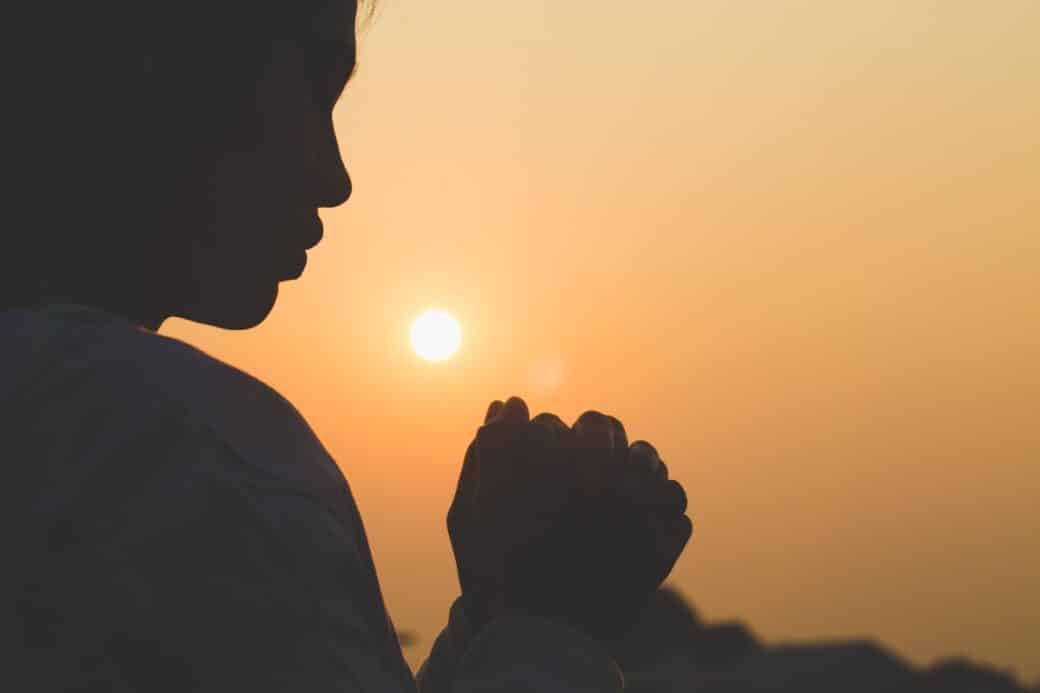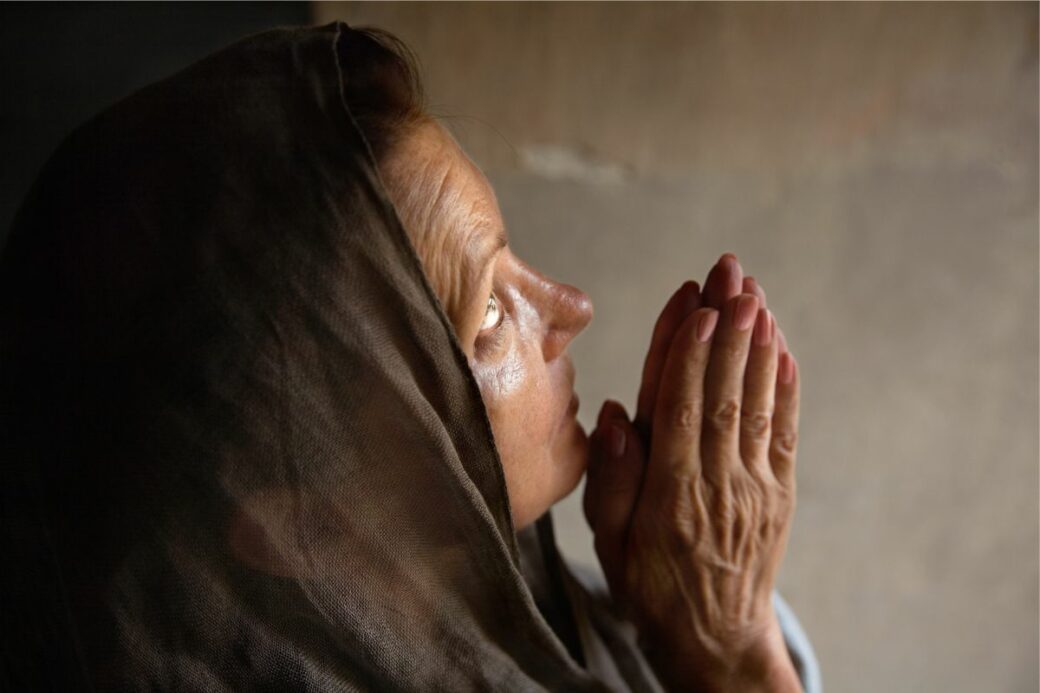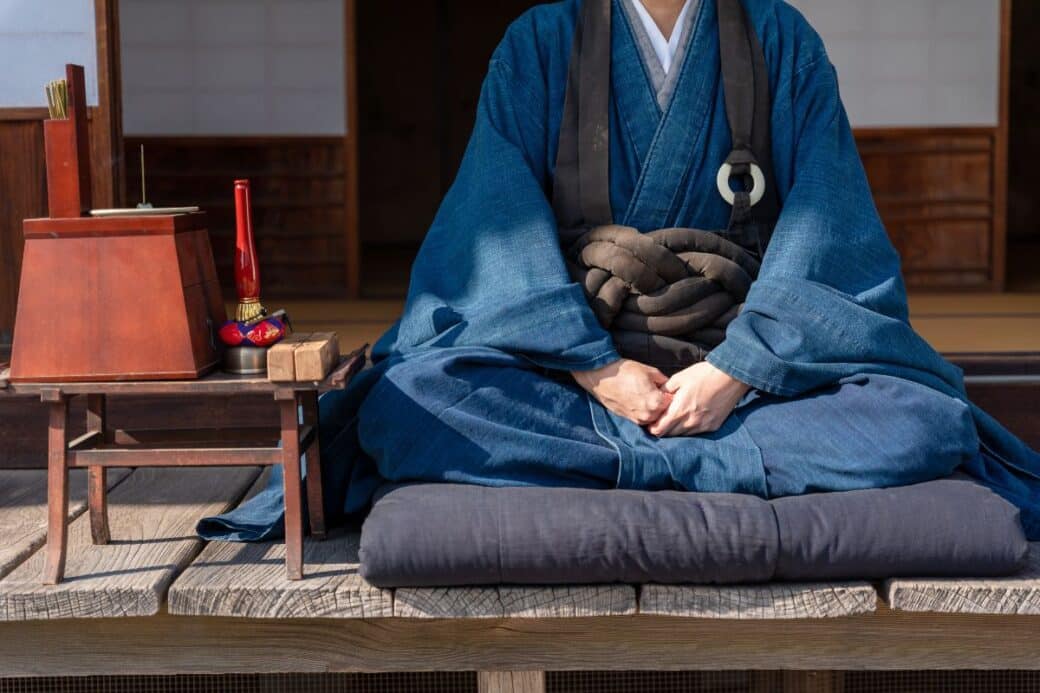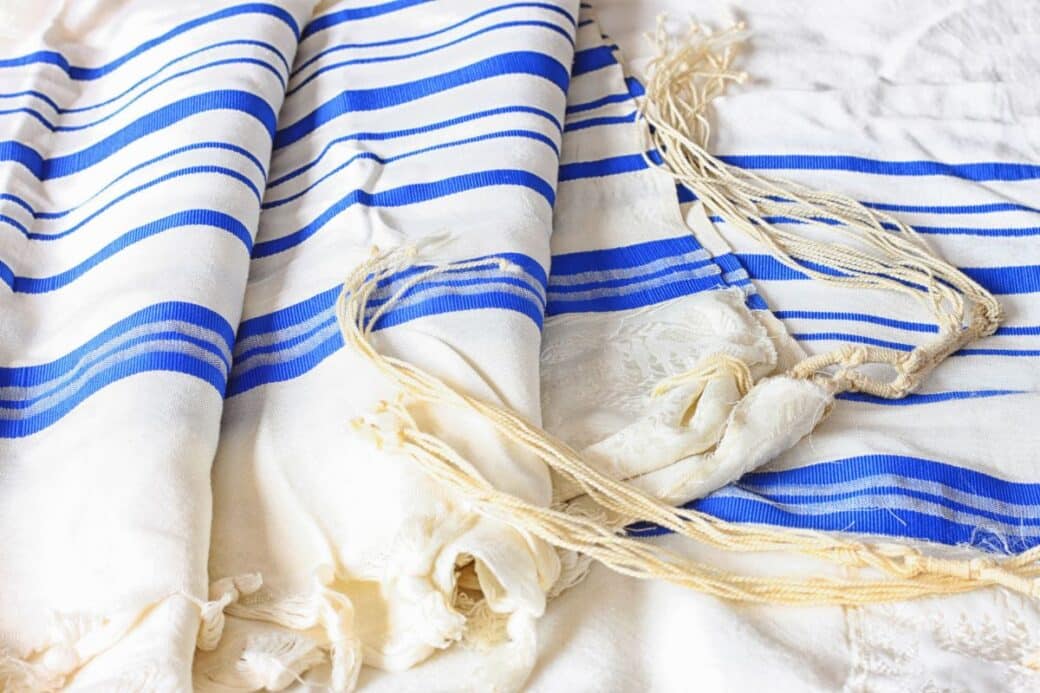Imagine a world where women can freely express their spirituality and connect with their faith in a way that feels authentic and empowering. In the often male-dominated landscape of religious practices, a question arises: can a woman wear a prayer shawl? This article explores the significance and cultural context of prayer shawls, delving into the ongoing conversation about women’s roles in religious traditions. By examining different perspectives, we can gain a deeper understanding of the potential for women to reclaim their religious identities and challenge societal boundaries in the pursuit of spiritual fulfillment.

Can A Woman Wear A Prayer Shawl: Historical Background of the Prayer Shawl
Origins of the prayer shawl
The prayer shawl, also known as a tallit, holds a rich historical significance spanning across various religions and cultures. Its origins can be traced back to ancient times, particularly within the Jewish tradition. In Judaism, the tallit serves as a symbol of faith, devotion, and connection with the divine. It is believed to have been inspired by the commandment in the Torah to affix fringes to the corners of garments as a reminder of religious obligations.
Significance of the prayer shawl in various religions
While the tallit is most well-known within Judaism, it is important to note that prayer shawls hold significance in other religions as well. In Islam, for example, a prayer shawl is referred to as a hijab or khimar, and it is worn by women as a symbol of modesty and devotion during prayer. Similarly, in Christianity, some denominations use prayer shawls or stoles as liturgical garments during worship services or special ceremonies. The prayer shawl, therefore, transcends religious boundaries and serves as a unifying symbol of spirituality and devotion.
Traditional Gender Roles & Religious Items

Current religious rules and restrictions
Within many religions, including Judaism, there have traditionally been gender distinctions regarding the use of religious items such as the prayer shawl. In Orthodox Judaism, for instance, women have historically been discouraged from wearing a tallit during prayer, as it has been regarded as an exclusively male garment. Similarly, in some Islamic communities, women are encouraged to wear the hijab as a sign of their religious devotion, while men may wear the cap or kufi. These gender-specific rules and restrictions often stem from interpretations of religious texts and cultural norms.
Influence of society and culture on religious practices
Religious practices and gender roles are not solely influenced by religious teachings; rather, they are often shaped by societal and cultural factors as well. Over time, changes in social attitudes have challenged traditional interpretations of religious texts and led to reevaluations of gender roles within religion. As societies evolve and become more inclusive, there is a growing acknowledgment of women’s rights and empowerment, which has had an impact on religious practices and the perception of gender equality.
Variations in religious practices across different cultures
Religious practices can vary significantly across different cultures, even within the same overarching religious tradition. For example, within Judaism, the approach towards women wearing prayer shawls can differ between Orthodox, Conservative, and Reform movements. While Orthodox communities generally adhere to traditional gender roles, Conservative and Reform movements have been more open to women wearing prayer shawls. These variations highlight the complex interplay between culture, tradition, and personal interpretations of religious teachings, thereby offering diverse perspectives on women’s use of prayer shawls.

Women’s Use of the Prayer Shawl
Women and prayer shawls across different religions
Women’s use of prayer shawls spans various religious traditions and is not limited to one specific faith. In Judaism, progressive movements such as the Conservative and Reform branches have embraced the idea of women wearing a tallit during prayer, emphasizing the principles of gender equality and women’s spiritual empowerment. Similarly, in Islam, while the hijab is traditionally associated with women, there are discussions within the Muslim community about women wearing prayer shawls as a means of expressing their religious devotion.
Historical records of women wearing prayer shawls
Historical evidence indicates that women have worn prayer shawls throughout various periods. In Judaism, for instance, ancient texts and archaeological findings suggest that women from early Jewish communities also wore prayer shawls during worship and prayer. These historical records challenge the notion that the use of prayer shawls has always been gender-exclusive, revealing a rich heritage of diversity and women’s involvement in religious practices.
Cultural shifts and changes in the use of prayer shawls
As societal and cultural norms continue to evolve, there has been a noticeable shift in the use of prayer shawls by women. In many religious communities today, women are reclaiming their right to wear prayer shawls, challenging traditional gender roles and advocating for inclusivity. This cultural shift reflects the growing recognition of women’s agency in matters of faith and spirituality, as well as the demand for greater gender equality within religious spaces.
Current Debates
Major arguments for women wearing prayer shawls
Advocates for women wearing prayer shawls highlight several compelling arguments. One major argument is that religious texts do not explicitly forbid women from wearing prayer shawls, suggesting that gender-exclusive interpretations are based on historical and cultural context rather than divine mandate. Furthermore, supporters argue that women’s right to express their spirituality should not be limited by their gender, and that allowing women to wear prayer shawls promotes inclusivity and gender equality within religious communities.
Major Arguments against women wearing prayer shawls
Opponents of women wearing prayer shawls often base their arguments on traditional interpretations of religious texts and long-standing cultural norms. They argue that religious teachings and historical practices should be upheld, maintaining gender distinctions in specific religious rituals. Additionally, some may express concerns about the potential disruption of social order or the dilution of religious traditions if established gender roles within religious communities are challenged.
Public opinion and the prayer shawl controversy
Public opinion regarding women wearing prayer shawls varies widely, reflecting diverse religious beliefs, cultural backgrounds, and personal ideologies. While some individuals support and celebrate women’s autonomy to wear prayer shawls, others firmly oppose it. The controversy surrounding women’s use of prayer shawls highlights the deep-rooted values, traditions, and perspectives within religious communities, often sparking passionate debates and shaping the future course of religious practices.

Impact of Women Wearing a Prayer Shawl on Gender Equality
Symbolic value of women using a prayer shawl
The act of women wearing prayer shawls holds profound symbolic value, representing a significant step towards gender equality within religious spaces. By donning a prayer shawl, women challenge longstanding gender norms, reclaim their agency, and assert their rightful place within the religious community. The symbolism extends beyond the physical garment, representing women’s spiritual autonomy and their equal right to pursue a deep connection with the divine.
The prayer shawl as a tool for gender equality
Women wearing prayer shawls can serve as catalysts for broader discussions on gender equality within religious institutions. Their presence challenges patriarchal structures and fosters dialogue about the inclusion and active participation of women in religious rituals and leadership roles. By embracing women’s use of prayer shawls, religious communities have an opportunity to reevaluate traditional interpretations of texts, promote inclusivity, and create a more equal and nurturing environment for all members.
Reactions and repercussions in religious communities
Women wearing prayer shawls often face reactions and repercussions within their religious communities, ranging from acceptance and support to criticism and opposition. While some religious leaders and congregants have embraced the shift towards gender equality, others may resist or even oppose it. This ongoing dialogue and confrontation of traditional norms can lead to the transformation of religious communities, with potential ripple effects that extend beyond the issue of prayer shawls and into broader discussions of women’s empowerment within religious spaces.
Challenges and Barriers
Obstacles faced by women wanting to wear a prayer shawl
Despite the strides made towards gender equality, women still encounter obstacles when desiring to wear a prayer shawl. Cultural, social, and individual barriers can hinder women’s ability to express their religious devotion freely. Some women may fear backlash or exclusion from their religious communities, while others may struggle with internalized beliefs about gender roles and their place within religious practices. These obstacles highlight the complexity of navigating gender norms and expectations within religious contexts.
Institutional resistance and opposition
Institutional resistance from religious organizations, particularly those with more conservative or traditional beliefs, can pose significant challenges for women seeking to wear prayer shawls. Some religious institutions may maintain strict gender roles, viewing the inclusion of women wearing prayer shawls as a departure from their core teachings and traditions. This resistance often stems from the fear of change and the perceived threat to religious authority and hierarchy.
Social barriers and prejudice against women using prayer shawls
Women using prayer shawls may encounter social barriers and prejudice from their communities. Preconceived notions and gender stereotypes can lead to judgment, marginalization, and exclusion. The social pressure to conform to established gender roles can be formidable, discouraging women from fully expressing their spirituality and exercising their religious freedoms. Overcoming these barriers requires a collective effort to challenge societal norms and promote a more inclusive religious landscape.

Case Studies: Women Wearing a Prayer Shawl
Stories of women who wear prayer shawls
Throughout history and in contemporary times, numerous women have forged their own paths and proudly worn prayer shawls within their respective religious communities. These women come from diverse backgrounds and express a range of motivations for wearing prayer shawls, but they share a common determination to challenge gender norms and assert their rightful place in religious spaces. Their stories inspire others facing similar struggles and contribute to the ongoing dialogue surrounding women’s inclusion and empowerment.
Impact on personal faith and spiritual life
For women who choose to wear prayer shawls, the act holds deep personal significance. It becomes a tangible expression of their faith and spirituality, allowing them to forge a stronger connection with their religious traditions and communities. Wearing a prayer shawl can empower women, providing them with a sense of purpose, belonging, and spiritual fulfillment. Moreover, it opens doors for personal growth, self-discovery, and a deeper understanding of their own spiritual journeys.
Perceptions and reactions from the community
The reactions of religious communities towards women wearing prayer shawls are diverse, reflecting the complex interplay of religious beliefs, cultural norms, and individual perspectives. Some community members may embrace and celebrate these women’s courage and commitment, recognizing the importance of inclusivity and equality. Others, however, may view their actions as subversive or disruptive, challenging the established order and triggering resistance or opposition. Understanding and navigating these varied reactions are essential for women seeking to wear prayer shawls within religious communities.
Role of Reform Movements
Influence of reform movements on the use of the prayer shawl
Reform movements within various religious traditions have played a crucial role in redefining the use of the prayer shawl and promoting gender equality. These movements have challenged traditional interpretations, advocating for women’s rights, and inclusive practices. They have encouraged dialogue and reinterpretation of religious texts, empowering women to reclaim their religious spaces and rituals. By actively pushing for change, reform movements have laid the foundation for increased acceptance of women wearing prayer shawls.
Actions taken by reform movements
Reform movements have taken several concrete actions to promote gender equality and women’s autonomy within religious spaces. They have revised ritual practices to include women, reimagined religious leadership roles, and provided platforms for women’s voices to be heard. Reform movements have initiated educational programs, engaged in interfaith dialogue, and advocated for broader societal changes to dismantle gender biases. These proactive measures aim to transform religious institutions, making them more inclusive, progressive, and reflective of the values of equality and justice.
Future prospects for women’s use of prayer shawls in these movements
Reform movements continue to evolve and shape the future of women’s use of prayer shawls. As these movements gain momentum and attract younger generations, there is an increased emphasis on inclusivity and equal representation. Women’s empowerment within religious spaces is becoming a defining aspect of reform movements, with ongoing efforts to challenge traditional interpretations that exclude women from wearing prayer shawls. The future prospects for women’s use of prayer shawls in these movements hold the promise of greater acceptance and visibility.
Future Trends
Predicted changes in the religious use of the prayer shawl
As societies continue to progress towards gender equality, it is likely that religious use of the prayer shawl will witness significant changes. Traditional gender roles are being reassessed, and religious communities are increasingly embracing the inclusive practices advocated by reform movements. It is predicted that more religious institutions will recognize and support women wearing prayer shawls, embracing the principles of equality and inclusion. This shift signifies a broader transformation within religious spheres, aligning them with the contemporary values of gender equality and women’s empowerment.
Role of younger generations in these changes
Younger generations are at the forefront of driving change within religious communities. They are more inclined to challenge traditional gender norms, persistently advocating for inclusivity, and gender equality. Young women and men are engaging in critical discussions, demanding equal representation, and playing active roles within their religious communities. Their activism and progressive mindset are reshaping religious practices, including the use of the prayer shawl.
Potential impacts on gender equality in religious society
The increasing acceptance of women wearing prayer shawls and the broader recognition of their equal rights within religious spaces have the potential to transform gender dynamics within religious society. By dismantling gender-exclusive practices, religious communities can pave the way for greater gender equality in leadership positions, decision-making processes, and the celebration of women’s religious contributions. The empowerment of women within religious society can inspire broader societal change, challenging traditional gender roles and fostering a more just and inclusive world.
Concluding Thoughts
Current standing of women wearing prayer shawls
The current landscape regarding women wearing prayer shawls reflects a shifting paradigm within religious communities. While there are still obstacles and resistance to overcome, increased support for gender equality and women’s empowerment is gaining ground. Reform movements and progressive voices challenge traditional interpretations, advocating for inclusivity and affirming the right of women to wear prayer shawls. Women’s increasing presence and activism pave the way for a more equal and just religious society.
Progress made in advocating for women’s religious equality
Significant progress has been made in advocating for women’s religious equality, reflected in the growing recognition of women’s right to wear prayer shawls across different religious traditions. The efforts of activists, scholars, and reform movements have contributed to raising awareness and engaging in meaningful dialogue. By challenging patriarchal structures, empowering women, and promoting inclusivity, the movement towards women’s religious equality has gained momentum and transformed the landscape of religious practices.
Potential future direction for women’s empowerment in religion
Looking forward, the potential for women’s empowerment in religion is promising. The ongoing discussions, activism, and evolving religious practices create opportunities for women to reclaim their voices, challenge gender norms, and play active roles within religious communities. The future direction for women’s empowerment in religion lies in the continued pursuit of greater inclusivity, equal representation, and recognition of women’s spiritual autonomy. This journey holds the potential to reshape religious landscapes, fostering communities that reflect the values of equality, justice, and compassion for all.




